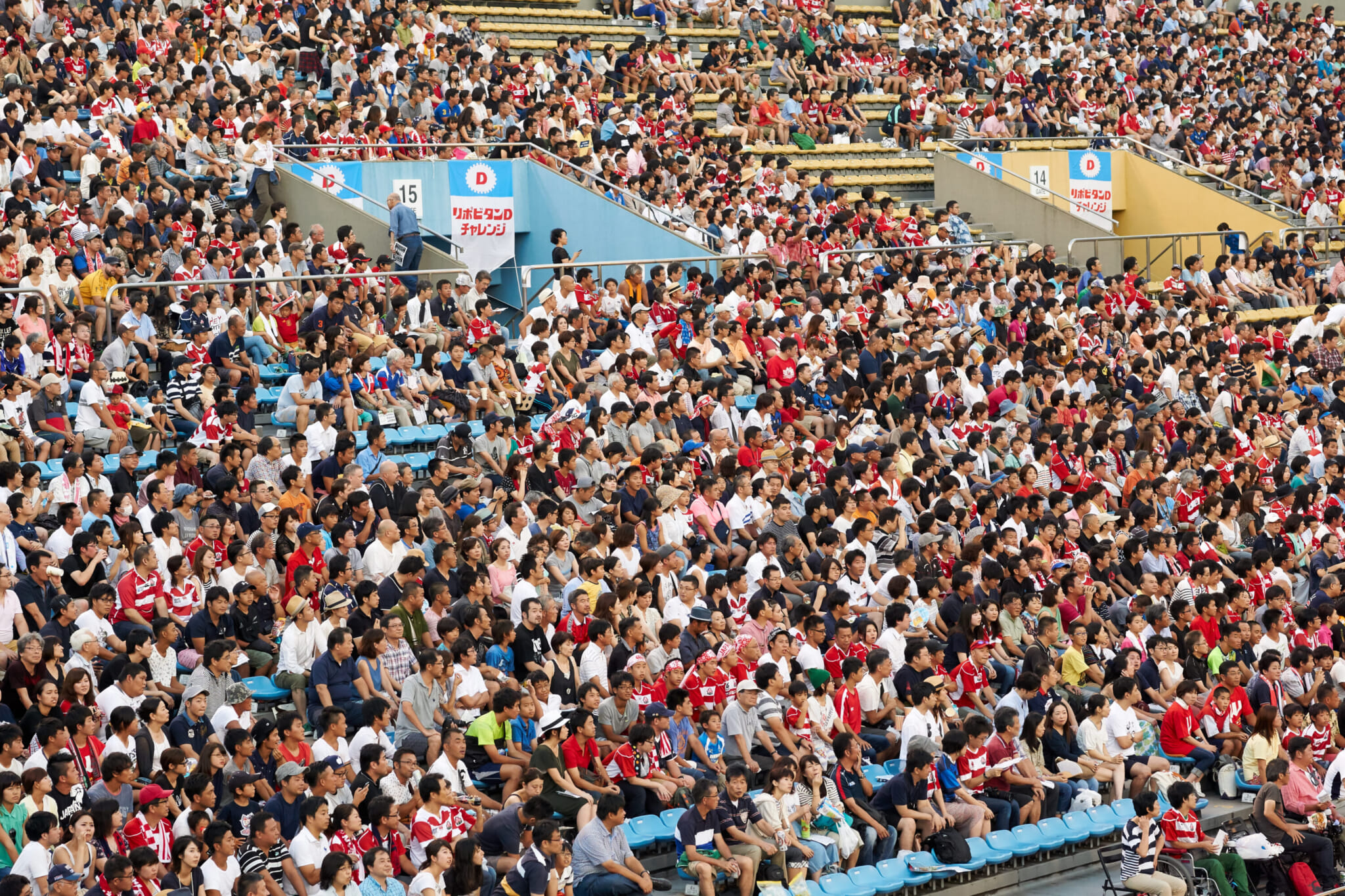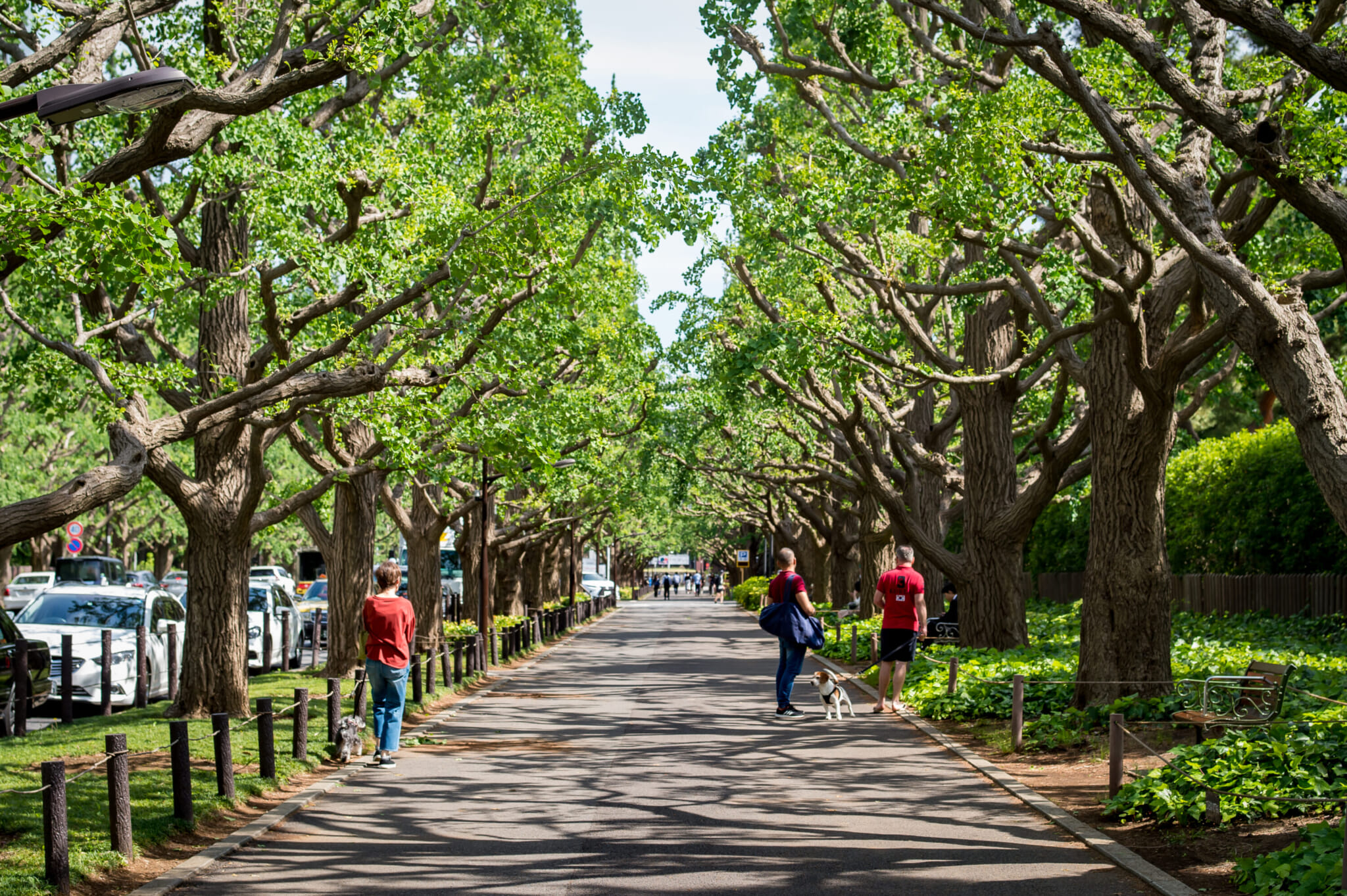The first time I watched a game of rugby at Chichibunomiya Stadium, I was immediately taken back. Not by the narrow loss the Tokyo Sunwolves sustained that day — such was the quotidian condition of their short tenure in Super Rugby — but by how much the stadium felt like a thread in the greater fabric of Tokyo.
Constructed in 1947, and later named in memory of Japan’s “Sporting Prince,” Yasuhito, Prince Chichibu, the stadium is bound by the skyscrapers of Aoyama on one side and a famous avenue of centenarian gingko trees on the other. In a metropolis where every inch of real estate comes at a premium, it feels apt to be sandwiched between sacred green space and the towering symbols of modernity.
Chichibunomiya is characterized more by this setting than by any inherent aesthetic, or even utilitarian, values. It’s creaking under its 76-year-old weight, lacking in modern facilities and in need of renovation. But it has also been consecrated into sporting lore.
As the “Spiritual home of Japanese rugby,” Chichibunomiya was purpose-built to watch a sport that has deep roots across the archipelago. Rugby, first formalized in England in 1845, was brought to Japan by immigrants in the 1870s. Edward Bramwell Clarke, a former teacher at Keio University, then introduced rugby to his students in 1899, “because they seemed to have nothing to occupy them out of doors in the after summer and winter days,” he later wrote. “I thought if I could get them interested in Rugger their hours during their free afternoons would not be so long and wearisome.”

Crowd in Chichibunomiya Rugby Stadium watching a Brave Blossoms match | Photo by Urban Napflin via Shutterstock
Thanks to Clarke and his colleague Ginnosuke Tanaka, rugby grew humbly in stature in the early-20sth century. Its booming popularity in the postwar era, however, is attributed in large part to Prince Chichibu, Japan’s patron of rugby, and his namesake stadium. Chichibunomiya has hosted numerous All-Japan Rugby Football Championship finals over the last 60 years, including the inaugural event in 1963, and has seen the Japan national team — also known as the Brave Blossoms — welcome touring sides from across the globe. It also hosted the Japan leg of the international Rugby Sevens Series from 2012 to 2015 and served as home to the Tokyo Sunwolves until they were axed from Super Rugby in 2019.
In short, it has been a fundamental building block in Japan’s dynamic rugby story. So, to see the fate to which Chichibunomiya has been resigned should fill any sporting fan with a heavy heart.
Leaving History Behind
The Tokyo Metropolitan Government (TMG) unveiled its Jingu Gaien Redevelopment Project last year, which seeks to create a new urban sports hub in the complex where Chichibunomiya resides. But rather than honoring the traditions of this hallowed turf, Chichibunomiya will be bulldozed in favor of a relocated, domed, multi-purpose stadium with artificial grass and a 40% reduction in seat capacity. Rugby at Chichibunomiya will, in effect, be reduced to an indoor game, with its heart-of-the-city-setting obscured by a metallic matrix. The new vision for the venue — doubling up as a concert and event space — has many fans asking if it can retain its honorary title.
The redevelopment ostensibly aims “to create an attractive, multi-functional urban area with a cluster of sports facilities, while preserving a grand urban landscape with lush greenery.” But the devil is in the unspoken detail. A group led by Kajima Corporation won the project with a bid of ¥8.1 billion ($60 million). The construction giant’s members include Mitsui Fudosan, Tokyo Dome Corporation, Tokyo Tatemono Co., Ltd and MHS Planners, as well as several news conglomerates — such as the Yomiuri Shimbun and Nippon Television Network — which are obliged to report favorably on the project.
Bundled into the sports hub redevelopment are plans to demolish and relocate nearby Meiji Jingu Stadium, Japan’s most venerated baseball ground, which has welcomed such luminaries as Babe Ruth and Lou Gehrig, and is famed for its arched red-brick colonnade. Extraneous commercial projects are on the drawing board too, such as a pair of high-rise office buildings and an 80-meter-tall accommodation and “sport-related” facility. Professor Mikiko Ishikawa, who specializes in landscape architecture, liked this to building skyscrapers in the middle of New York’s Central Park.
Approximately 1,000 trees will be removed during construction, including those donated in honor of Emperor Meiji. Moreover, the new baseball stadium will be built to within six meters of the ginkgo avenue with structural piling that will burrow 40 meters into the ground. Horticulture experts have said this will damage the tree roots, making any claims spurious about preservation.

Not for the first time in Japan, activists are drumming up support via online petitions. Consultant and writer Rochelle Kopp, who launched a similar campaigns against the Tokyo Live Sites Project in 2021, has created a petition in opposition to the redevelopment with nearly 200,000 signatures to date. Author and longtime Japan resident Robert Whiting, who first watched baseball at Meiji Jingu Stadium in the 1960s, started a petition of his own in January. Titled “Save Jingu Stadium!”it has garnered 37,000 signatures and counting.
Most recently, Tsuyoshi Hirao, a former professional rugby player, drew up a petition opposed to the demolition of Chichibunomiya. It has more than 18,000 signatures. They align with the view that, “We who love rugby do not want to be part of ‘sportswashing’ that destroys the environment under the guise of sports.”
Of course, the Chichibunomiya crusade is really about legacy — a concept enshrined in the dogma of the Japan Sports Council (JSC), the central organization that oversees development and management of sports facilities, and the Japan Rugby Football Union (JRFU), rugby’s governing body. Much as we saw with the Olympics in 2021, the legacy in this case stretches no further than the wallets of officialdom.
The JRFU, which is headquartered at Chichibunomiya Rugby Stadium, has long failed the rugby-watching public. Their complexity in the redevelopment is in keeping with an organization that prioritizes the feathering of its own nest over the growth of the sport throughout the country. The 2019 Rugby World Cup, in which hosts Japan defied the odds to reach the quarter-finals, placed the Brave Blossoms as genuine contenders on the sport’s greatest stage. The success of the tournament was integral in drafting some of the best players in the world into the domestic club game, while the financial spoils — a record $5.39 billion — provided fertile ground for grassroots development and building upon Japan’s upward trajectory.
Instead, officials have decided in behind-closed-door meetings with no public consultation that rugby would be best served by a new stadium that sounds neither attractive for watching live sport nor fit to be rugby’s spiritual home. “Even with the passage of time,” stated the TMG in its redevelopment factsheet, “we must inherit the will of our predecessors and pass them on to the next generation.”
Of all the nonsense it has espoused, perhaps this is the hardest to stomach.
